When a television show is set in a hypothetical future, there is a large amount of creative interpretation that can go into the production design.
More importantly, though, the costume designer can outfit the characters in whatever they feel may someday be accurate.
When a television show is set in the past, however, less of a creative license should go into the design and fashion because authenticity is required for the viewers to believe or accept that those characters are actually in an earlier time period.
If, for example, an episode of Bonanza showed Mr. Cartwright yelling upstairs to Little Joe, “Turn off that damn hi-fi!” viewers would be confused because they would know that no such device existed in that particular time period.
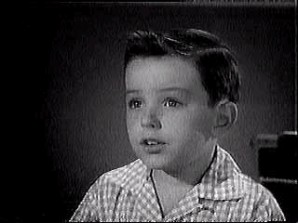 |
| I don’t know what happened to Wally’s iPad or nothin’… |
Fashion is one of the easier details to get right for many period shows. If the show takes place in a time period less than 100 years from today, it is more likely that many of those clothes are in existence somewhere, meaning they can be purchased or used as templates for authentic recreations. When a show asks its audience to imagine what they are watching is a story from another time, they sort of owe it to the audience, then, to make an effort at keeping it believable.
Two television shows that people associate with the actual periods the show themselves are said to inhabit are Mad Men and Happy Days.
Mad Men attempts authenticity at every turn. Actual events are sometimes incorporated, clothing is meticulous in regards to the fashion of the time, the sets, storylines, even dialogue show little to no sign of having come from a contemporary production.
Happy Days, set from 1955-1965 over its entire run from 1974-1984, set the bar pretty low, by comparison.
Sure, the 1970’s were maybe of a different mentality as far as keeping it believable, but if the premise of your show is all about nostalgia, then it seems that some amount of effort should be made for the audience.
An executive whose heyday was in 1960’s Manhattan can watch Mad Men and tell their grandchildren, “That’s what New York looked like, back then” or “Hey, your grandma and I had furniture exactly like that” or “I still wish I had my old suits. I dressed just like Roger Sterling.”
On the other hand, parents sitting with their kids in 1979 and watching a show that was supposed to represent their own adolescence might find it harder to say, “Your father had a polyester suit exactly like that” or even “Boy, did we love feathering our hair.”
The finale of Happy Days took place in 1965, ten years from when the characters first appeared. Season 4 of Mad Men took place in 1965-66, so which is more accurate of the time?
Let’s take a look.
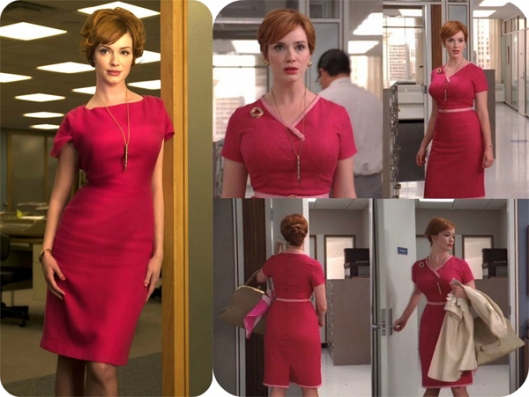 |
| “You don’t need to tell me I look good, I already know.” |
Joan looks stunning in a pink, true to the period outfit. Her hair pulled back with a bump for a professional, fashionable look.
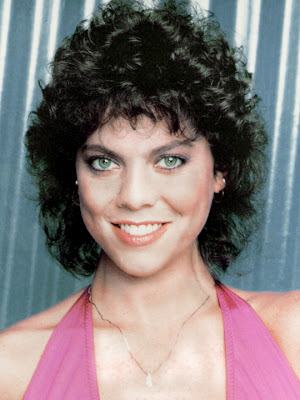 |
| “Let’s grab a can of Aqua Net, put on an Izod shirt and let’s hit that Beatles concert. Bitchin’!” |
Joanie looks, well, alright, I guess, in her pink dress. Her hair permed and… permed some more for a look that Jheri curl had not yet imagined in 1963/4.
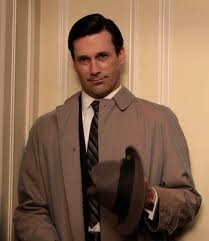 |
|||||
| “It’s a raincoat and I look good. Get out of my way.” |
Don Draper epitomizes the New York executive of 1960’s New York. He’s well-dressed in suits that are classic, but forever stylish. Don can even make a raincoat look cool.
 |
| “I feather my hair because that’s what we do back in the early 60’s. And boy do I love wide, polyester ties as many of us do here in the early 60’s.” |
I will give Happy Days credit here in that the character is wearing a raincoat. That’s about all that can be said about this image. I sort of feel like they weren’t really trying here.
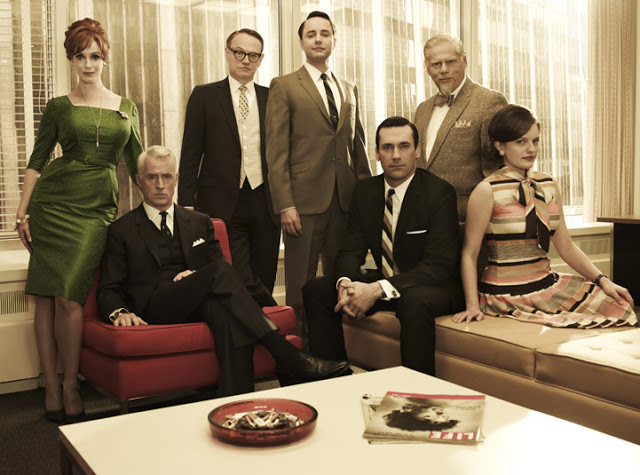 |
| It’s authentic if it can pass as an actual photo from the period. |
The fashion and overall look of Mad Men is one of its major selling points.
It is as much a part of the show’s appeal as the characters and storylines. It works hard to get things as realistic as possible and requires very little suspension of disbelief on behalf of the viewer to accept the decade that it is set. The viewers are immersed in the show’s world, there’s no need to add an occasional bit of context in order to remind the audience when and where it takes place. You will never see Don Draper wearing a t-shirt that says, “1965 – The current year!”
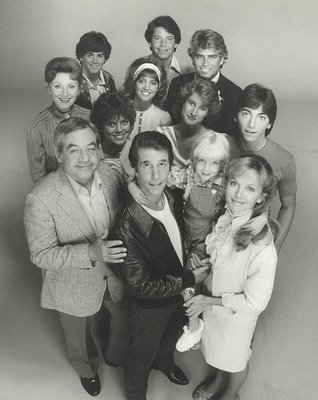 |
| It’s less authentic when it shares the same look as Eight Is Enough or Dallas. |
The first two seasons of Happy Days did make a more commendable effort in terms of look and dress of the characters.
Very quickly, however, the show became contemporary with only an occasional, almost obligatory reminder of an old song on the jukebox or a lead-in shot of someone in an old car to remind the viewers that this was supposed to take place in the past.
The worst part is that it would have been so much easier for Happy Days to achieve authenticity than it is for Mad Men now.
The show was set less than 20 years from when it actually aired. This means that every Goodwill and yard sale was practically a costume bonanza for the show. Yet, they did not try very hard and, at a certain point, stopped altogether. Some of the clothes on Mad Men are authentic, others are recreated from existing patterns, hairdressers did some research before going to work.
Imagine if the only period reference Mad Men had was Happy Days.
Don Draper with feathered hair and wide-legged golf pants would be less charming than he is. Joan with a perm would cause the majority of the English-speaking community to take a vow of asexuality.
Other than sharing a time period, Don Draper and Joan had very little in common with Ralph Malph and Joanie.
What would Mr. Cunningham say about all of this?
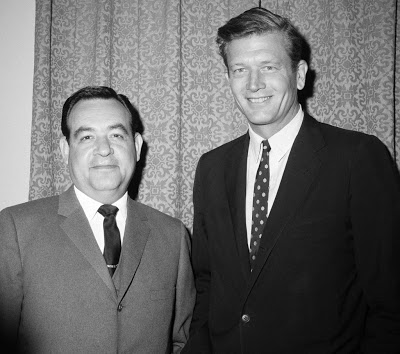 |
| Actual picture of Tom Bosley in 1965 |
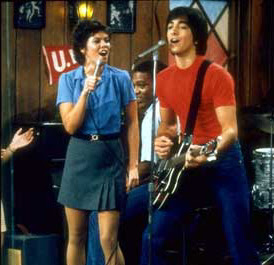 |
| We love the time period we’re supposed to be in. Yeah, yeah. We love whoever the president is. I think its that one, old guy. Yeah, yeah. Denim skirts and feathered hair are totally hip. Yeah, yeah. |












































































































